Related Research Articles

Canadair Ltd. was a civil and military aircraft manufacturer in Canada. In 1986, its assets were acquired by Bombardier Aerospace, the aviation division of Canadian transport conglomerate Bombardier Inc.
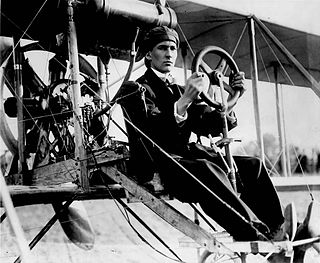
The Aerial Experiment Association (AEA) was a Canadian-American aeronautical research group formed on 30 September 1907, under the leadership of Dr. Alexander Graham Bell.

Air Commodore Leonard Joseph Birchall,, "The Saviour of Ceylon", was a Royal Canadian Air Force (RCAF) officer who warned of a Japanese attack on the island of Ceylon during the Second World War.

Canada's Aviation Hall of Fame, based in The Hangar Flight Museum in Calgary, Alberta, Canada, commemorates and honours those whose accomplishments in aviation contributed so much to Canada's development as a nation. Founded in 1973, the Hall of Fame has honoured thus far more than 200 aviators, engineers, technicians and administrators.
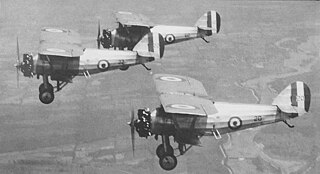
The Siskins, officially the Siskin Exhibition Flight, were a Royal Canadian Air Force (RCAF) aerobatic flying team that was established in 1929 at Camp Borden, Ontario. They were named after the bird family Siskin. It was the air force's first official aerobatic team. Flying three Armstrong Whitworth Siskin biplanes, the Siskins quickly built a reputation for performing daring maneuvers. The Siskins flew more than 100 air shows over three years before being disbanded in 1932 when the Great Depression forced the RCAF to reduce operations.
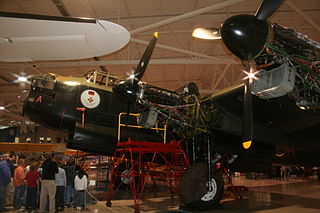
Victory Aircraft Limited was a Canadian manufacturing company that, during the Second World War, built mainly British-designed aircraft under licence. It acted as a shadow factory, safe from the reach of German bombers.

John Alexander Douglas McCurdy, was a Canadian aviation pioneer and the 20th Lieutenant Governor of Nova Scotia from 1947 to 1952.

Maxwell William Ward was a Canadian aviator and founder of Wardair Airlines, at one time the third-largest air carrier in Canada.

The Canadian Aviation Corps (CAC) was an early attempt to create an air force for Canada at the beginning of the First World War. The unit was created in 1914 and was attached to the Canadian Expeditionary Force. The CAC had a maximum strength of three personnel and one aircraft which was delivered but never used. By May 1915, the unit had ceased to exist.

The Canadian Air Force (CAF) was a contingent of two Canadian air force squadrons – one fighter and one bomber – authorized by the British Air Ministry in August 1918 during the close of the First World War. The unit was independent from the Canadian Expeditionary Force and the Royal Air Force (RAF).
Andrew Podnieks is a Canadian author and ice hockey historian. He has written more than 45 books about hockey. He also has contributed extensively to international hockey research at the International Ice Hockey Federation, the Hockey Hall of Fame, Hockey Canada, and Canada's Sports Hall of Fame. Some of his books have been translated into French and Swedish. He is also a frequent contributor to www.IIHF.com, the official website of international hockey.

Wilfrid Thomas Reid was an English aircraft designer and considered one of the pioneers of the Canadian aircraft industry.

No. 162 Squadron RCAF was a unit of Royal Canadian Air Force Eastern Air Command. Formed as a bomber reconnaissance squadron at RCAF Station Yarmouth, Nova Scotia, Canada on 19 May 1942 with Canso A aircraft, the squadron spent an uneventful eighteen months on east coast anti-submarine duty. In January 1944, it was seconded to RAF Coastal Command and moved to RAF Reykjavik, Iceland to cover the mid-ocean portion of the North Atlantic shipping route. On April 17, Flying Officer T. C. Cooke and his crew attacked and sank U-342 while on a meteorological flight west of Iceland.

The Avro Canada CF-103 was a proposed Canadian interceptor, designed by Avro Canada in the early 1950s as a development, and possible replacement of the company's CF-100 Canuck, that was entering service at the time with the Royal Canadian Air Force (RCAF). Although intended to be capable of flying at transonic speeds, the CF-103 only offered a moderate increase in performance and capability over the CF-100; subsequently, the aircraft never progressed beyond the mock-up stage.
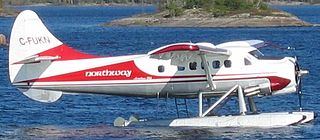
The history of aviation in Canada begins with the first manned flight in a balloon at Saint John, New Brunswick in 1840. The development of the aviation industry in Canada was shaped by the interplay of Canadian national ambitions, national and international politics, economics, and technology. Experimental aviation started in Canada with the test flights of Bell's Silver Dart in 1909, following the epochal flight of the Wright Brothers in 1903. The experimental phase gave way to use of aircraft in warfare. Many Canadians served in the British Royal Flying Corps and Royal Air Force during the First World War.
Colonel Owen Bartley Philp, CM, DFC, CD was a Canadian air force officer who was instrumental in the formation of the Golden Centennaires aerobatic team, commanded the Golden Centennaires, and was founder of the Snowbirds aerobatic team. Philp was made a Member of the Order of Canada in October 1992 and was inducted into the Canadian Aviation Hall of Fame in 2015.
The Canadian Aerodrome Company was the first commercial enterprise in the British Empire to design and manufacture aircraft. The company was formed following the dissolution of Alexander Graham Bell's Aerial Experiment Association. The company was established by Frederick W. "Casey" Baldwin and J.A.D. McCurdy in 1909, with the financial backing of Alexander Graham Bell. The company was headquartered in Baddeck, Nova Scotia at the Kite House at Bell's Beinn Bhreagh estate.

The Hubbard Monoplane, also nicknamed "Mike", was an early aircraft designed by John McCurdy and built by the Canadian Aerodrome Company.
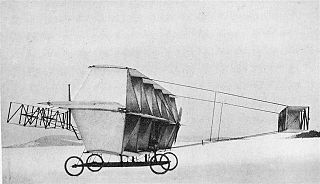
The Oionus I was a tetrahedral triplane built for Alexander Graham Bell. It was the culmination of Bell's experiments with kites built at Baddeck, Nova Scotia. The aircraft's design combined those of the Aerial Experiment Association (AEA)'s AEA Silver Dart biplane and his AEA Cygnet kite. It was Bell's final aviation pursuit and Canada's first and only triplane design. The aircraft attempted a test flight in March 1910, but failed to achieve flight.
References
- ↑ "Authors - Larry Milberry," CANAV Books: Canada's Aviation Heritage Publisher (2006 CANAV Books).
- ↑ "Authors - Larry Milberry," supra.
- ↑ "Canada's Aviation Hall of Fame (CAHF) honours three new inductees," Archived 24 February 2004 at the Wayback Machine News & Views, Canadian Aviation Historical Society (2004 CAHS), which recognized his significant and prodigious contribution to the recording of Canada's aviation history, meticulously documenting, with photographs, the role that aviation has played in the development of our country"